Hyman Bloom Chronology
This chronology is an expanded version of the chronology written for “Modern Mystic: The Art of Hyman Bloom”, © 2019 Robert Alimi
- Childhood & the Student Years: 1913 – '38
- The Young Painter: '39–'54
- The Mid-career Draughtsman: '55 – '70
- The Later Years: '71–2009
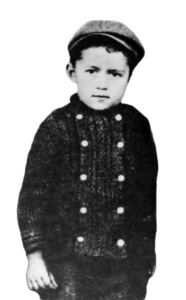
1913
Hyman Bloom is born in Brunoviski, Latvia.1 His given name is Chaim Zelig Melamed (meaning “life, blessed, teacher”). He is the youngest child of Joseph (ca. 1872–1951) and Anna Melamed (ca. 1874–1955).2 He is the youngest of four surviving brothers; a year prior to his birth, his parents had lost a son and a daughter to an influenza epidemic. His exact birth date is unknown, but Bloom settles on March 29 as the most likely date. His father is a leatherworker and his mother a seamstress.
Hyman’s oldest brother, Samuel, immigrates to America in 1912 at the age of 15; his next oldest brother, Morris, follows in 1915. On arrival, the brothers change their name to Bloom, which comes from their mother’s side of the family.
1920
November 26: Having been delayed by World War I, the remaining Bloom family members make their way to Copenhagen and leave for the United States aboard the Oscar II.
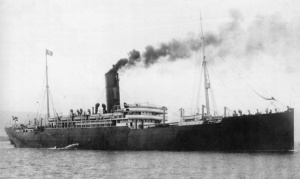
December 10: The Blooms arrive at Ellis Island. Hyman’s brother Barnard is ill on arrival and is hospitalized.
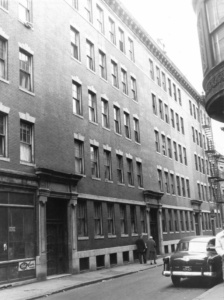
December 14: Barnard is discharged from the hospital. Samuel has come from Boston to meet the family. They travel to Boston and move in with Samuel and his small family at 8 Auburn Street in Boston’s West End. The building and the street itself were wiped out in Boston’s massive urban renewal project in the 1950s. The location of 8 Auburn Street today is approximately at the southeast corner of the Massachusetts General Hospital Bone Density Center.
Samuel and Morris have established a leather goods business, the Bloom Brothers Bag Company, manufacturing bags and briefcases. Bloom’s father and his brother Barnard go to work for Samuel and Morris.
1926
Mary Cullen, Bloom’s eighth-grade art teacher at Washington Junior High School, successfully recommends him for a scholarship to attend after-school classes at the Boston Museum of Fine Arts (MFA). At Cullen’s suggestion, Bloom also enrolls in drawing classes at the West End Community Center, a settlement house on Blossom Street.
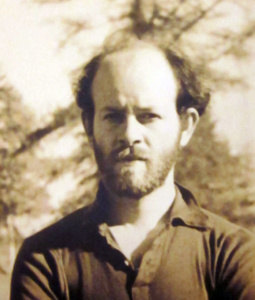
The instructor is Harold K. Zimmerman (1905–1941), whom Bloom later describes as a “hero figure.”
Following his bar mitzvah, Bloom ceases to practice Judaism.
1927
Bloom decides to attend Boston’s High School of Commerce. Although a thirty-minute walk from his house, the school is just a ten-minute walk from the MFA, where he spends many after- school hours.
Bloom meets Jack Levine (1915–2010), also a Zimmerman student.
1929
Bloom’s drawings at this time feature boxers and wrestlers. His two oldest brothers are bodybuilders, and Hyman spends time at the gym and attending local wrestling events. Later, in his early twenties, Hyman takes up wrestling himself and is reportedly quite good at it.
Bloom’s first documented oil painting, Portrait of a Young Girl, is completed.
Fall: Denman Waldo Ross (1853–1935), professor of design at Harvard and an MFA trustee, learns of a talented young artist named Jack Levine. Ross arranges to meet Levine, and through him meets Zimmerman and Bloom. As a means of furthering his own theories on teaching art, Ross begins to subsidize the boys, paying them each a $12 weekly stipend and providing them with studio space. Ross begins teaching them painting one night a week while they continue their drawing studies with Zimmerman. Although Ross’s instruction is generally beneficial to Bloom, he later states, “I never felt I was Ross’s student, I was Zimmerman’s.”
1930
February: Denman Ross writes “An Experiment in Art Teaching,” a seven-page proposal to Harvard professor Paul Sachs asking for assistance in finding funding for his Bloom/ Levine/Zimmerman project at approximately $3,500 per year.3
June: Bloom graduates from high school.
Bloom meets Elizabeth “Betty” LeBaron Chase (1903–1941), another Zimmerman student. Betty is ten years older than Bloom. Chase’s father, Robert Savage Chase, is an artist. Her mother, Jessie Anderson Chase, is a teacher and author. Betty has recently separated from her husband, Frank Tovey, and returned to Boston to live with her parents on Snow Hill Street in the North End. Well educated, well traveled, and an accomplished violinist, she has a deep interest in metaphysical literature. She shares her library with Hyman, and they develop a close friendship. Chase introduces Bloom to the painter Loren MacIver (1909–1998) and her husband, the poet Lloyd Frankenberg, as well as the poet Lorraine Catheron. Bloom remains friendly with MacIver until her death in 1998.
1931
Zimmerman takes Bloom and Levine to New York to see the recently opened Museum of Modern Art (MoMA). Bloom views works by Marc Chagall, Paul Klee, Georges Rouault, and Chaim Soutine. He is particularly impressed by the works of Rouault and Soutine.
1933
February 9: The exhibition An Experiment in Art Teaching opens at the Fogg Art Museum. Curated by Ross, the exhibition features drawings by Zimmerman students Bloom, Levine, and Carl Pickhardt, as well as two painting students of Ross who are not Zimmerman’s students. The show is well reviewed in the local press.
Bloom and Levine break from both Ross and Zimmerman. Betty Chase suggests they share a studio, and she volunteers to pay the rent. The trio finds a two-room studio at 21 Kirkland Street, on the boundary of Boston’s Bay Village and South End neighborhoods. Bloom lives in the unheated studio except during periods of bitter cold, when he stays with his parents. The studio building and Kirkland Street itself no longer exist, having been wiped out during construction of the Massachusetts Turnpike. The loca- tion is approximately at the current address of an office complex at 358 Tremont Street.
December: The Public Works of Art Project (PWAP) begins, and Bloom immediately goes to PWAP’s offices at the Isabella Stewart Gardner Museum to sign up. Bloom stays on until the program ends in late 1934.
1935
Bloom signs up for the Works Progress Administration (WPA) and works on and off for the program until 1941.
Circa 1935: A young Abraham (Al) Stone Freedberg, a research fellow in cardiology at Harvard, visits the Levine/Bloom/Chase studios as part of a “life enrichment” activity for Harvard physicians. Freedberg’s and Bloom’s paths will cross again in the early 1950s.
1936
Levine, still living with his parents, decides to leave the Kirkland Street studio in favor of painting at home. Chase continues to live with her parents in the North End, while Bloom still lives in his studio except for periods of extreme cold.
Bloom paints Skeleton (12 × 68 in.); similar in size and composition to Hans Holbein the Younger’s The Body of the Dead Christ in the Tomb (1520–22), a copy of which Bloom had admired at the Fogg Art Museum.
1937
Bloom begins listening to Indian music after discovering a 78 rpm recording by Uday Shankar. Shankar began touring the United States in 1933 with his dance troupe Uday Shankar and His Hindu Ballet.
1938
After finding a pamphlet on the street, Hyman starts attending meetings of the Order of the Portal.
Bloom paints The Stove. He considers this to be his first painting that is essentially nonderivative. In preparatory notes for his 1954 retrospective, the painting is reported as having been destroyed.
1939
Summer: Bloom rents a one-room beach shack from poet Lorraine Catheron. The shack is located on the outer dunes near Mayflower Heights on Cape Cod, in what is now known as the Peaked Hill Bar Historic District. He lives and works in isolation, with the exception of occasional visits from Loren Maclver.
While on the Cape, Bloom reads The Secret Doctrine, by Helena P. Blavatsky, the cofounder of the Theosophical Society.
September: Back in Boston, Bloom returns to the Order of the Portal and also begins visiting the Theosophical Society and the Vedanta Center, an organization based on the teachings of Vedanta as developed by the nineteenth-century Indian mystic Sri Ramakrishna. At the Vedanta Center, Bloom is further exposed to Indian music. He buys his first Indian instrument, a sitar, from a musician he meets at the center.
Late fall: Bloom has a transformational mystical experience: “I had a conviction of immortality, of being part of something permanent and ever-changing, of metamorphosis as the nature of being. Everything was intensely beautiful, and I had a sense of love for life that was greater than I had ever had before.”
Bloom paints the early Christmas tree pictures (frontispiece, plates 1 and 3) and begins work on The Synagogue (plate 2).
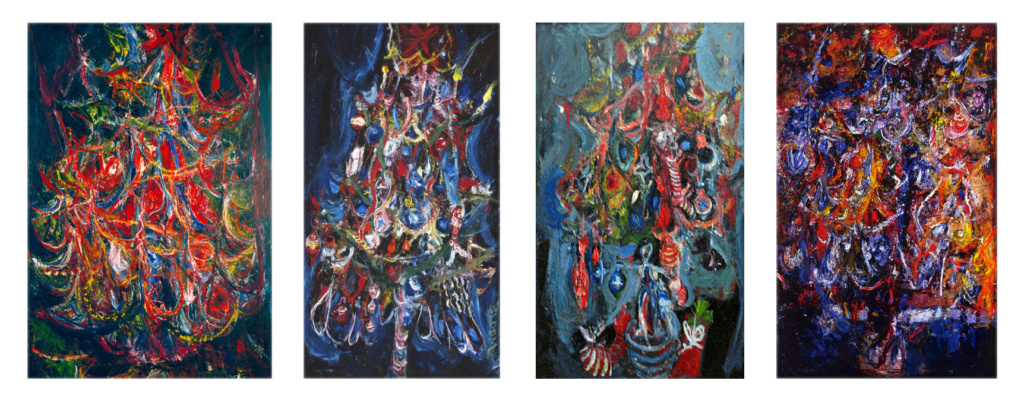
1940
Bloom completes his first chandelier painting (location unknown) and Jew with Torah (see page 139).
1941
January 8: Betty (Chase) Tovey takes her own life at age thirty-seven. Betty’s body is found in a lodging house at 23 West Dedham Street, less than a mile from the studio she shared with Bloom. Betty’s parents ask Bloom to identify her body at the morgue. Her death hits Bloom very hard.
June 16: Harold Zimmerman dies at age thirty- six; cause of death is bacterial endocarditis. He had been seriously ill since late January. Bloom advises Zimmerman’s widow on selling some of Bloom’s early drawings that Zimmerman had retained. Bloom feels that Zimmerman owned the drawings, as he had never charged Bloom for any instruction. Following this model, Hyman never charges his private students for instruction.4
November: Dorothy Miller, a curator at MoMA, writes to Bloom requesting to visit and view his work. Miller’s husband, Holger Cahill, was national director of the WPA’s Federal Art Project, and had been made aware of Bloom by Richard C. Morrison, supervisor of the New England region of the WPA.
November: Morrison takes Miller to visit Bloom. Miller selects a number of paintings and requests that Morrison send her any additional Bloom works held in the WPA inventory.5 The thirteen works sent to MoMA include The Bride (plate 4), Christmas Tree (plate 3), Jew with Torah, and The Synagogue.
November 15: MacIver writes to Bloom describing her visit with Alfred H. Barr Jr. at MoMA to view the first batch of Bloom pictures to arrive. She writes, “Alfred Barr has your big Synagogue picture hanging in his office, and I am to tell you that he and Dorothy Miller and all the other people that have seen them admire and like them tremendously.”
December 5: Dorothy Miller phones MacIver to let her know that Bloom’s next batch of pictures has arrived. MacIver goes to MoMA that day to view the pictures and meet with Miller. Miller asks MacIver to write to Bloom and request that he supply more biographical information for their catalogue. MacIver writes to Bloom and updates him on her visit to MoMA. She adds, “They’ve asked me to ask you again, too, about a snapshot, on account of you are good looking. This seems reasonable to me. After all, why should Boston be more privileged than New York? Well, well.”
1942
January: The exhibition Americans 1942: 18 Artists from 9 States is held at MoMA from January 21 to March 8, after which the works are split into two traveling exhibitions that begin touring the country for a year. In a January 26 letter to Bloom, Miller says, “Mrs. Halpert and Mr. Curt Valentine seem both to be interested in the possibility of handling your work.” On January 28, MoMA buys The Bride (plate 4). On February 2, William Constable of the Boston MFA writes to MoMA about possibly buying Jew with Torah. Art historian Millard Meiss buys the red Christmas Tree; two days later, he commits to buying the small Synagogue.
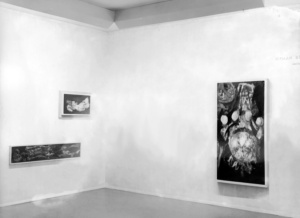
Bloom meets the composer Alan Hovhaness (1911–2000), who, like Bloom, has a strong interest in mysticism. Bloom, Hovhaness, and Hermon Di Giovanno meet frequently for dinner and discussions of mysticism. This continues until Hovhaness moves to New York in 1951.
1943
February 20: Ala Story, director of the American British Art Center, writes to Bloom inquiring as to whether he has New York representation, noting “our Gallery feels most appreciative of your work.” Story proposes to hold a solo show in the fall of 1943. Bloom does not pursue representation or the exhibition.
March 18: The touring version of Americans 1942 comes to an end. Dorothy Miller writes to Bloom, “I still wish personally that the Museum would buy the big synagogue picture, but we are out of purchase funds at present.”
May 6: Jew with Torah, part of the Americans 1942 touring exhibition, sells to the collector Thomas Adler of Ohio.
September 28: Miller writes to Bloom asking if he will have any new pictures ready by November 1. MoMA is including The Bride in an upcoming exhibition and would like to show a new Bloom painting along with it. Bloom does not provide a new work for the exhibition.
Bloom bumps into the artist David Aronson (1923–2015), who is on his way to Boston’s Kenmore Hospital to view cadavers in preparation for a new painting. He invites Bloom to tag along. Bloom is intrigued by the idea and decides to accompany Aronson.
MoMA purchases the large Synagogue.
Jean Deering, owner of the Stuart Art Gallery on Stuart Street in Boston, begins representing Bloom. She pays him a stipend of $80/month against future sales.6
December: Bloom finally leaves the unheated Kirkland Street apartment/studio and moves to 152A Huntington Avenue.
1944
March 6: Miller informs Bloom that MoMA was planning to send his Synagogue to the Dayton Art Institute for an exhibition, but the picture is being repaired after it was damaged on its return from a show at the Boston Institute of Modern Art. In its place, MoMA decides to send Chandelier (location unknown), and Miller suggests that Bloom supply a title that is more directly synagogue related.
Bloom completes the last of the early Christmas Tree series (plate 5).
December 4: Samuel Kootz writes a series of letters to Bloom about his plans to open a New York gallery and his desire to provide New York representation for Bloom.
1945
January 19: Kirk Askew, owner of Durlacher Bros. gallery in New York, writes to Bloom for the first time, referencing Dorothy Miller’s urging of Bloom to work with Durlacher Bros.
February 8: Askew visits Bloom in Boston.
February 20: The Worcester Art Museum, having invited Bloom to take part in their exhibition of sixty contemporary American artists, awards first prize ($500) for The Synagogue. The jury consists of James Johnson Sweeney, Dorothy Adlow, and Jean Charlot.
February 21: Bloom returns the signed gallery agreement to Durlacher Bros. Askew is to provide a stipend of $100/month against future sales. Askew will remain Bloom’s New York dealer until he retires and closes Durlacher Bros. in 1967.
April 23: Bloom travels to New York to visit Durlacher Bros. and spend time with Askew.
August: Through Alan Hovhaness, Bloom meets Elizabeth Gregory, a young pediatrician and piano student of Hovhaness. Bloom and Gregory become friends; in addition to having a shared passion for music, Bloom is interested in learning about her experiences performing autopsies. Hovhaness begins hosting a salon after his weekly evening lesson with Gregory, and Bloom is a regular participant. Gregory also joins Bloom and Hovhaness at Mrs. Cushman’s Dining Room in Copley Square, where Bloom and Hovhaness have lunch and dinner on a regular basis.
September: Bloom’s agreement with Jean Deering (Stuart Art Gallery) expires. The gallery’s Bloom show goes forward, but the opening scheduled for October slips to November. Askew is concerned that he won’t get Bloom’s pictures in time for his own Bloom exhibition opening in January. Jean Deering has paid Hyman a stipend of $80/month; to settle his negative account balance of $1,440, she takes ownership of six paintings, including Chandelier I (plate 6), Older Jew with Torah (plate 8), and The Bride (see page 142).
October 1: Askew sends Bloom his first $100 stipend.
November 6: As planned, Bloom’s first solo exhibition opens at the Stuart Art Gallery. The twelve paintings on view include those Deering has acquired, as well as Chandelier II (plate 7), Archaeological Treasure (plate 9), Treasure Map (plate 10), and A Leg (plate 15).
December: After Bloom’s solo show at Stuart Art Gallery closes on December 1, the pictures are all shipped to Durlacher Bros. for Bloom’s first solo show in New York.
December 26: At a pre-exhibition viewing at Durlacher, the curator at the Addison Gallery of American Art purchases Treasure Map, having first viewed the picture at the Stuart Art Gallery exhibition.
December 31: Alfred Barr, Dorothy Miller, and James Johnson Sweeney visit Durlacher Bros. to view the Bloom pictures; they ask that both Archaeological Treasure and Child be held for MoMA. Sweeney feels that the most important picture is Female Corpse.
1946
January 7: Bloom’s solo exhibition opens at Durlacher Bros. Archaeological Treasure is sold to Edgar Kaufmann. A Leg is sold to Mrs. Lloyd Wescott and is (presumably) gifted to the poet and novelist Glenway Wescott, her brother-in-law.
January: Smith College buys Younger Jew with Torah (1944).
April and May: During each month, Bloom travels to New York for a week to visit friends and attend concerts.
July: Bloom vacations in Vermont, staying near Montpelier. He likes the area so much that in a letter to Durlacher employee Mark Pagano he writes, “I almost hate to go home.” In the same letter, responding to Pagano’s inquiry on painting progress, Bloom writes, “I don’t know what I can say about the pictures. I’d rather let them grow in silence and then let them speak for themselves.”
1947
Spring: Bloom visits Askew and spends a week in New York. He considers looking for an apartment and moving to New York but decides against it.
September 22: Regarding his planned 1948 solo exhibition at Durlacher, Bloom sends an update to Kirk Askew: “Things are going pretty well. I think, though, that you will have to hold off the ravenous collectors until January. Then perhaps we can throw them another corpse or two.”
1948
March 30: Bloom’s second solo exhibition opens at Durlacher Bros. The exhibition consists of nine paintings, including Buried Treasure (plate 11), The Stone (plate 12), The Harpies (plate 14), The Rabbi, and Female Corpse, Back View (plate 16).
Brothers Hyman and Seymour Swetzoff, both of whom had worked at Boston’s Boris Mirski Gallery, open the Frameshop Gallery on Huntington Avenue in Boston, providing fram- ing services and selling works on paper. The Swetzoffs stock a selection of Bloom’s early student works and some recent drawings. They also handle a few Bloom oils, occasionally acting as a Boston agent for Durlacher Brothers.
The profile “Hyman Bloom: The Attainment of a State of Being,” by Hyman Swetzoff, is published in Berkeley: A Journal of Modern Culture, no. 1.
June: Christmas Tree from the MoMA collection is selected for inclusion at the twenty-fourth Venice Biennale.
After treatment for stomach ulcers with Denis Leigh, an English psychiatrist conducting research at Massachusetts General Hospital, Bloom becomes interested in psychoanalysis. He begins reading the literature on the topic, and in the early 1950s decides to continue therapy with Clemens Benda, a Harvard psychiatrist who has many artist patients and gladly accepts works for payment.
Bloom paints Self-Portrait (plate 17) and, atypically, keeps the painting for himself. The picture is not exhibited or published. He later agrees to sell the picture to Al Freedberg, who gives it to his son, Richard, and Richard’s wife, Judy.
December: Due to Bloom’s low production, he is always in debt to the Durlacher gallery, forcing Askew to periodically balance the account by taking ownership of works at 50% of their list price. Askew and Bloom mutually agree to discontinue monthly stipend payments.
1949
February: The first retrospective of Bloom’s work opens at the Boris Mirski Gallery and features twenty paintings. These include Christmas Tree (plate 3), Christmas Tree (plate 5), The Synagogue, Chandelier I, Chandelier II, Older Jew with Torah, Archaeological Treasure, Treasure Map, The Stone, The Harpies, A Leg, and Female Corpse, Back View.
March: Bloom is awarded a Guggenheim Fellowship of $2,500. His application includes letters of support from Alfred Barr, James Johnson Sweeney, and James Soby.
Fall: Bloom starts teaching at Wellesley College, where he remains for two years before moving to a position at Harvard.
George Clayton Kennedy, a Harvard professor of geology, and his girlfriend, Sally Slocum, an artist, jointly purchase Bloom’s 1944 Christmas Tree from the Boris Mirski Gallery. They rotate the picture between their respective apartments. They marry in 1950, they later say, in order to eliminate the hassle of moving the Bloom picture back and forth. The Kennedys begin building a very significant collection of Bloom works and remain good friends with the artist until George’s death in 1980.
1950
January: Elaine de Kooning publishes “Hyman Bloom Paints a Picture” in ARTnews.
April: James J. Sweeney curates the Virginia Museum of Fine Arts’ 1950 Biennial Exhibition of Contemporary American Paintings in Richmond. Among the seventy-seven works by artists including Salvador Dalí, Max Ernst, Arshile Gorky, Edward Hopper, Willem de Kooning, John Marin, Stuart Davis, and Georgia O’Keeffe is Bloom’s Female Corpse, Back View. The provocative image ignites great controversy in Richmond.
June: Bloom is chosen to represent the United States at the twenty-fifth Venice Biennale with five paintings: The Bride, Chandelier II, The Harpies, Archaeological Treasure, and Child in the Garden (1945, private collection). Also representing the United States are Jackson Pollock, Rico Lebrun, Willem de Kooning, Arshile Gorky, Lee Gatch, and John Marin.
1951
February 16: Bloom’s father dies following a stroke. He was eighty-six years old.
Archaeological Treasure and The Stone are illustrated in Abstract Painting: Background and American Phase, by Thomas Hess.
Leaving Wellesley College for a position at Harvard, Bloom is appointed Fogg Museum fellow in painting and drawing and lecturer on fine arts at Harvard University. However, he teaches only drawing, not painting, and he never lectures.
1952
Bloom begins teaching painting to two students in the evening: Nina Bohlen, a junior at Radcliffe currently enrolled in his Harvard drawing class; and Ellen Sinclair, an art student from Ohio who, on the recommendation of Hyman Swetzoff, had begun to study drawing with Bloom in 1949.
Art historian Barbara Novak writes an essay on Bloom while doing graduate work at Harvard.
Bloom begins to experiment with producing large-scale, fully rendered drawings as cartoons to be used for paintings; this experiment lasts three years and finishes with a series of large rabbi drawings. He abandons the practice after deciding that this approach interferes with his painting process when it comes to rendering the works in oil. However, this re-engagement with drawing is significant, and within a few years Bloom will turn most of his attention to works on paper.
Early 1950s: Around this time, Bloom again meets the physician Al Freedberg while seeking a second opinion on a diagnosis of thyroid cancer. Bloom has been scheduled to have his thyroid removed, but Freedberg determines that the initial diagnosis is incorrect and Bloom’s condition is benign. Freedberg becomes Bloom’s doctor, lifelong friend, and ardent supporter.
1953
Josef Albers, chairman of the Art Department at Yale, invites Bloom to teach at the university as a visiting artist. He declines.
Bloom moves to 320 Marlborough Street in Boston’s Back Bay and sets up a studio in the new apartment.
March: The American Academy of Arts and Letters awards Bloom an Academy Award in Art, which includes a grant of $1,000; the associated awards exhibition includes MoMA’s three pictures: The Bride, The Synagogue, and Christmas Tree, as well as Older Jew with Torah.
March: Lloyd Goodrich, the associate director of the Whitney Museum, begins collaboration with Kirk Askew and Frederick Wight to plan Bloom’s 1954 retrospective.
December: Bloom is selected for inclusion in the Bienal de São Paulo. Five paintings are sent to Brazil: The Rabbi, The Synagogue, The Bride, Treasure Map, and Female Corpse, Back View (see page 142).
George and Sally Kennedy move to Los Angeles when George accepts a position at UCLA’s Institute of Geophysics and Planetary Physics.
1954
January/February: Early in the year Bloom reads Aldous Huxley’s just-published Doors of Perception.
February 10: The poet Elizabeth Bishop, residing in Rio de Janeiro, writes Bloom, “I’ve recently come back from the Bienal in São Paulo and I thought your pictures were certainly the outstanding ones of the American exhibit there . . . and that is saying a lot.”
March 1: In advance of Bloom’s solo exhibition, Askew holds private viewings for New York museum curators. He reports back to Bloom that Lloyd Goodrich and Herman Moore (Whitney Museum) are “tremendously enthusiastic” and can’t make up their minds between Cadaver on a Table (plate 25) and The Anatomist (plate 30).7 They decide to purchase the latter and also buy the associated full-scale drawing, Autopsy (plate 29), a few weeks later. Robert Hale (Metropolitan Museum) is “impressed and excited” and is anxious to buy a painting but has concerns about the reaction of trustees. Askew sends The Medium (plate 21) and The Hull (plate 26) over to the Met so Hale can show them to director Francis Taylor. James Johnson Sweeney (Guggenheim) is very enthused and considering Conquest (location unknown) and Female Leg (collection of Timothy Phillips), but a purchase is dependent on the trustees’ approval. Askew agrees to send four oils and several drawings to the Guggenheim during the morning of March 11. Alfred Barr and Dorothy Miller (MoMA) split their preferences. Barr likes The Anatomist most of all, but the Whitney has already purchased it; Miller prefers Conquest.
March 9: Bloom’s solo exhibition opens at Durlacher Bros. Autopsy paintings are the predominant theme. The show features ten paintings (among them Cadaver on a Table, Slaughtered Animal [plate 27], Apparition of Danger [plate 22], The Hull, The Medium, and The Anatomist) and six drawings (including Cadaver II [plate 31], Autopsy, and Orpheus [see page 134]). The show extends to April 3, after which the pictures are shipped to Boston to be included in the Institute of Contemporary Art (ICA; formerly Institute of Modern Art) retrospective.
April 1: ARTnews features Apparition of Danger on its cover.
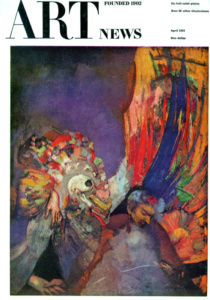
April 9: Bloom’s retrospective, organized by Frederick Wight at the ICA and Lloyd Goodrich at the Whitney, opens in Boston. The exhibition continues through July 15. The exhibition includes thirty-nine paintings and a large selection of works on paper. The catalogue features Older Jew with Torah on the cover. The show will later travel to the M. H. de Young Memorial Museum, San Francisco; the Albright Art Gallery, Buffalo; and the Whitney Museum of American Art, New York.
April 14: George Kennedy buys Slaughtered Animal. Bloom gives Kennedy a deeply discounted price on the picture. He sends a telegram to Hyman: “Overjoyed at prospect of acquiring this painting. Notify Askew carcas [sic] is sold.” Kennedy later writes to Bloom, “Your generosity in selling this picture to us for such an absurd price overwhelms me a little bit.”
April 24: Clemens Benda offers Bloom the chance to take part in an experiment assessing the effects of LSD on the creative process. Benda and his associate Max Rinkle (who in 1949 was the first to import LSD into the United States from Sandoz Pharmaceuticals in Switzerland) go to Bloom’s apartment to administer the drug and document the results; the records (notes and an audio recording) are now in the Harvard Medical School archives. Nina Bohlen is present for the experiment but declines to accompany the trio when Benda and Rinkle take Bloom, mid-experiment, out for lunch at the Ritz-Carlton.8
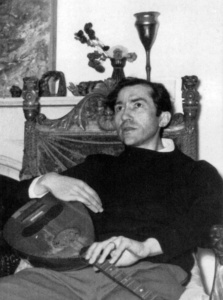
April 26: Time magazine publishes a full-page color reproduction of Slaughtered Animal.
Through Hyman Swetzoff, Bloom meets Jerry Goldberg, a businessman who, like Bloom, grew up in the West End. Goldberg becomes a friend and patron, building a large collection of Bloom works on paper. Until his death in 1965, Goldberg joins the rotating group of people who meet Hyman for lunch on Saturdays.
September 29: Bloom marries Bohlen in a simple civil ceremony. They are married at the office of Justice of the Peace Ross H. Currier on Exeter Street in Boston’s Back Bay. Nina’s ring features a synthetic emerald manufactured by George Kennedy, an offshoot of some of his experimental work at the University of California at Los Angeles (UCLA).
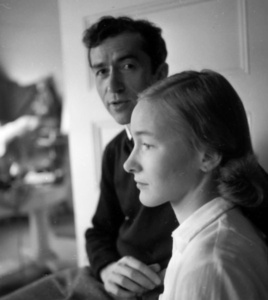
With Bohlen now living in their Marlborough Street apartment, both Bloom and Bohlen rent studios on Dartmouth Street. Hyman has the top floor; Nina has a smaller space below, next to Ellen Sinclair’s studio. The building consists entirely of arts and crafts studios on the upper floors, while the first floor houses a tavern. At 4:00 p.m. sharp every day, Nina and Ellen make tea. Ellen pounds on the ceiling with a broomstick handle to signal to Hyman that the tea is ready. An assortment of people gather regularly at the appointed hour. This continues until Nina and Hyman separate in 1958, when Hyman vacates both the studio and the Marlborough Street apartment.
1955
January 19: Bloom’s mother suffers a fatal heart attack at the age of eighty-one.
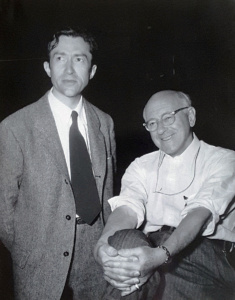
April: The Portland Art Museum invites Bloom to serve on the jury for the exhibition Artists of Oregon. Although he doesn’t like long-distance travel, Bloom accepts the invitation, and he and Nina fly to Portland. After five days there, they drive south along the coast to San Francisco, Los Angeles, and San Diego. Through Frederick Wight, they meet the actor Vincent Price, a major art collector and a client of Hyman Swetzoff, and the director Cecil B. DeMille on the set of The Ten Commandments. Nina and Hyman stay with George and Sally Kennedy while in Los Angeles. Wight organizes a dinner with the Kennedys and assorted Southern California art-world friends.
August: Hyman and Nina make their first trip to Lubec, Maine. They stay at her parents’ house for one week. Bloom is not impressed by the area.
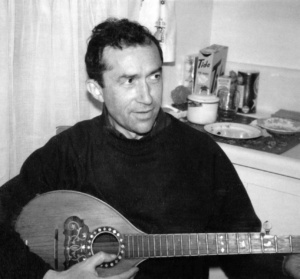
November 11: The collector William Lane buys Skeleton and The Hull. Lane will add other Bloom paintings and drawings to his collection and eventually develops a personal relationship with Bloom.
Bloom begins providing the Swetzoff Gallery with an increasing number of fully rendered drawings, which find enthusiastic buyers— among them the New York dealer/collector Edith Halpert. There is no evidence that, from 1955 onward, Bloom sends any more paintings to Durlacher Bros. in New York. This return to his drawing roots becomes complete when Bloom focuses exclusively on drawing for a full decade beginning around 1960. The Swetzoff Gallery will hold major exhibitions of Bloom drawings in 1957 and 1965. This shift in interest also plays a significant role in Hyman’s dimin- ishing visibility in New York. While there are exceptions in both cases, Durlacher Bros. is, functionally, Bloom’s paintings dealer, while Swetzoff Gallery in Boston is his dealer for works on paper. When Bloom’s painting output decreases, so does the flow of new works to New York. After Bloom’s 1954 Durlacher Bros. exhibition, seventeen years pass before his next New York gallery show opens at the Terry Dintenfass Gallery.
1956
Throughout the year Hyman focuses on works on paper and is extremely productive. He produces dozens of finished drawings utilizing variety of materials, including white ink on dark toned papers, black ink on light toned papers, gouache, as well as conte crayon (sometimes dissolved and applied with a brush).

February: Hyman completes Law of the Fishes (plate 38), a white ink drawing on dark blue paper that becomes the genesis for a later series of large “seascape” oil paintings.

August: Hyman’s second trip to Lubec. He now begins to explore the area known as the Bold Coast, which runs from Quoddy Head south to the town of Cutler. He becomes intrigued by the area, which, due to its unique geography, is essentially a narrow strip of land with a subarctic microclimate featuring dense stands of balsam fir, red and black spruce trees, and an array of unusual plant species. The entire area is often engulfed in dense fog.
Nina and Hyman meet Stella Caralis, hostess at Omonia, a Greek eatery on Stuart Street frequented by Boston artists.
1957
February–April: Halpert buys five Bloom drawings from the Swetzoff Gallery for her own collection.
May–June: Bloom has a solo show at the Santa Monica Library Art Gallery. The show consists entirely of works from the George and Sally Kennedy Collection.
Slaughtered Animal appears as a full-page color plate in 300 Years of American Painting by Alexander Eliot.
June–July: Swetzoff Gallery has a solo exhibition of Bloom’s drawings.
November: The exhibition Drawings by Hyman Bloom opens at the Currier Gallery of Art in Manchester, New Hampshire, then travels to the Museum of Art, Rhode Island School of Design, Providence, and the Wadsworth Atheneum, Hartford, Connecticut. Having seen the exhibi- tion in Hartford, Kirk Askew writes to Bloom, saying, “I do wish we could have had the show here before it started on the road.” Askew also notes: “The landscapes are such a completely new departure and new vision for you that I was tremendously fascinated by them. I am wondering if anything like that will appear in the new paintings.”
1958
February: The director James Ivory, on the recommendation of a friend of George Kennedy, meets with Hyman in Boston for assistance with selecting music for his short film on Indian miniature paintings, The Sword and the Flute.
November: Bloom and Nina Bohlen separate;
Hyman moves to 235 Beacon Street, then later to Irving Street. He rents dedicated studio space on Boylston Street. Nina and Hyman remain very close, and he continues to visit Lubec with Nina every August.
1959
February: Bloom is awarded a $10,000 Ford Foundation Fellowship, to be paid quarterly over two years.
April 10: The exhibition Four Boston Masters opens at the Wellesley College Art Museum and later travels to the Boston MFA to open on May 19. The other featured artists include John Singleton Copley, Washington Allston, and Maurice Prendergast.
April: The Romantic Agony: From Goya to de Kooning opens at the Contemporary Arts Museum, Houston. The exhibition features Slaughtered Animal and The Harpies.
Bloom moves to 1 Winchester Street, Brookline, Massachusetts. His new apartment includes a studio.
Bloom completes a handful of paintings, including Two Fish Heads (plate 40) and Still Life with Turban Squash (plate 41) before putting his oil paints down for the next decade.
1960
October: The exhibition Francis Bacon / Hyman Bloom opens at the UCLA Art Galleries. The show is organized by Frederick Wight. With the exception of The Anatomist, on loan from the Whitney, the Bloom paintings come entirely from the collection of George and Sally Kennedy. Peter Selz from MoMA travels to Los Angeles to give a talk during the exhibition.
Bloom, along with his friend James Rubin, founds the Pan Orient Arts Foundation. The organization is devoted to the collecting, recording, and study of South Indian classical music. After Rubin’s death in 1991, the organization’s materials, including Bloom’s collection of more than four hundred 78 rpm recordings, are donated to Harvard University.
Bloom turns his attention exclusively to works on paper. He initially plans to focus only on drawing for six months; this extends to a full decade.
1961
The Whitney Museum publishes American Art of Our Century by Lloyd Goodrich and John I. H. Baur. The Anatomist is illustrated with a full-page color plate.
September: Art in America begins a series profiling American artists. The first profile, written by Brian O’Doherty, focuses on Bloom.
December: Hyman and Nina divorce. Lacking legal grounds in Massachusetts, Bloom travels to Alabama to procure a twenty-four-hour divorce.
1962
Bloom and Nina, along with Hyman Swetzoff, attend the wedding of Stella Caralis, whom they have known since 1956. The marriage proves to be short lived.
1965
February 2: Hyman Bloom Landscape Drawings 1962–1964 opens at the Swetzoff Gallery.
1966
November: Askew writes to let Bloom know that Torso and Limbs (plate 23) has sold, and encloses a check. Mostly out of touch with Hyman for a couple of years, he tells the artist that he essentially retired a year earlier, and George Dix is now running the gallery on his own. Askew’s plan to transition the business to a new partner, Robert Isaacson, has fallen through, and he decides to close Durlacher Bros. in 1967. Torso and Limbs was the last Bloom work in Durlacher’s inventory.
1968
April 19: The solo exhibition Drawings of Hyman Bloom opens at the University of Connecticut Museum of Art at Storrs. After closing on May 19, the show travels to the San Francisco Museum of Art, June 27–August 4; the Whitney Museum of American Art, New York, September 17–October 27; and the Boston University School of Fine and Applied Arts Gallery, November 8–December 7.

May: Swetzoff Gallery closes after Hyman Swetzoff is murdered.
Terry Dintenfass Gallery, New York, begins representing Bloom. Dintenfass travels to Boston to meet Hyman.
1971
November: Bloom’s first Terry Dintenfass Gallery exhibition opens, featuring works on paper. Bloom has not had a solo gallery show in New York since 1954.
1972
March 28: Terry Dintenfass organizes a Bloom solo exhibition, Hyman Bloom Drawings, which also includes several of his first oil paintings since resuming oil painting in 1971.9
Summer: Bloom moves to 1426 Cambridge Street, Cambridge, and has a very small studio across the hall from his living quarters. The original Legal Sea Foods restaurant, at 235 Hampshire Street, is across from his Inman Square apartment. He frequently has both lunch and dinner at the restaurant.
The owner of the Legal Sea Foods, George Berkowitz, offers Bloom a vacant space above the restaurant to use for storage as well as additional studio space. Hyman accepts the offer.
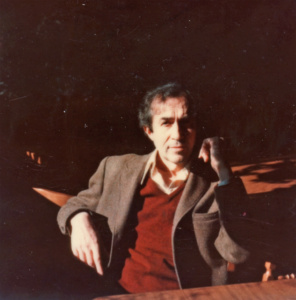
1974
Bloom is elected to membership in the American Academy of Arts and Letters.
Along with Nina Bohlen and James Rubin, who organizes the trip, Bloom travels to India. The trio is hosted by a series of musicians as they travel around the country attending lengthy concerts. Hyman hopes to meet the Indian guru Sai Baba, but he happens to be out of the country during their trip.
1977
Sammi Schenker Sadur visits with Bloom in Cambridge during research for her 1978 MA thesis for Tulane University, “The Jewish Themes in the Modern Paintings of Jack Levine and Hyman Bloom: A Comparison, Contrast, and Exploration.”
1978
February: Stella Caralis, having left Boston for Chicago in 1968 and returned in 1976, reaches out to Bloom during Boston’s infamous Blizzard of ’78 to see how is he faring. They renew their friendship.
July 20: Bloom marries Caralis on her birthday.
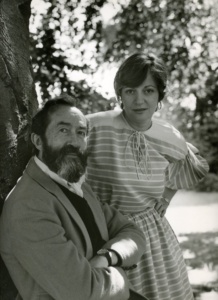
1980
January 16: A nighttime kitchen fire results in the total loss of the Legal Sea Foods building. Stella, having seen the fire in a dream just days before, has already moved Hyman’s paintings from the restaurant’s storage area to their apartment. However, Hyman’s large library is lost, as well as a number of sketchbooks and drawings.
1983
May: Bloom changes his New York representation from the Terry Dintenfass Gallery to Kennedy Galleries.
Fall: Desiring more space than their current three-room Cambridge apartment provides, Hyman and Stella buy a house in Nashua, New Hampshire. Hyman converts the third-floor space into a studio.
1984
Bloom is elected to membership as an associate in the National Academy of Design, New York.
1992
January: Hyman Bloom: Paintings and Drawings opens at the Museum of Art, University of New Hampshire. The catalogue features essays by Dorothy Thompson and Holland Cotter. It is Bloom’s first museum exhibition since 1968.
1994
Bloom is elected to full membership in the National Academy of Design.
1996
April: The Spirits of Hyman Bloom: Sixty Years of Painting and Drawing opens at the Fuller Museum of Art, Brockton, Massachusetts. In the accompanying catalogue, Dorothy Thompson provides a detailed biography based on a series of interviews with Bloom.
1997
October: Hyman and Stella travel to Europe for three weeks. After spending time in Switzerland and Greece, they travel to Colmar, France, to see Matthias Grünewald’s Isenheim Altarpiece. Bloom sends a postcard of the altarpiece to Nina Bohlen, writing, “Friday I saw the Best Pt’g in the whole World!!”
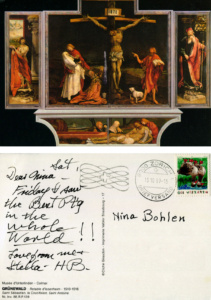
1998
Judith Bookbinder at Boston University completes her dissertation, “Figurative Expressionism in Boston and Its Germanic Cultural Affinities: An Alternative Modernist Discourse on Art and Identity,” which features two detailed chapters on Bloom.
1999
Bloom suffers a heart attack and undergoes a procedure to insert a stent. He makes a full recovery.
2002
Bloom builds a large, first-floor studio as an addition to the house. He maintains his third-floor studio as well.
October 2: The exhibition Color and Ecstasy: The Art of Hyman Bloom opens at the National Academy of Design.
2009
August 18: Bloom’s dear friend Al Freedberg dies at the age of 101. Bloom attends the funeral on August 21.
August 23: Bloom is hospitalized in Boston.
August 26: Bloom’s heart rate becomes very irregular and he dies that morning. He is buried in the family plot at the Vilno Cemetery in West Roxbury, Massachusetts.
2010
The documentary Hyman Bloom: The Beauty of All Things, directed by Angélica Brisk, is released. Screenings take place in 2010 at the MFA, Boston, and a number of other museums in the Northeast. The film is dedicated to the memory of Al Freedberg.
End Notes
- The Latvian village of Brunoviski has, since about 1930, been known as Brunava. JewishGen, an affiliate of the Museum of Jewish Heritage, lists alternate spellings as Brunnau (German), Brunovishok (Yiddish), Brunovishki (Russian), and Brunowiszki (Polish). The village is located fifty miles south of the Latvian capital city of Riga, and five miles north of the Lithuanian border. The Ellis Island passenger arrival records indicate “Brumishli, Lithuania” as “Residence Place” for the immigrating Bloom family members, while Bloom always said he was from Latvia. Borders between Latvia and Lithuania have a long history of shifting over time, and no doubt that is part of the discrepancy.
- The entire family would change their names upon immigration to the United States: Josel Leib became Joseph; Jochama became Anna; Berel Wolf became Barnard.
- In his proposal, Ross writes, “Zimmerman is now employed by me and the boys will be, when they get out of school in June. Zimmerman must have a suitable salary as he is to give all this time and attention to the experiment. As it goes on he will write a full account of it from the beginning to the end; an account which will be published and ought to be of great interest to students and teachers of art in this and other countries. The whole problem of art teaching is involved in Zimmerman’s experiment and a solution of the problem will be not only interesting but may be far reaching in its consequences.” Outside funding was not secured for the project, but Ross continued to provide funding on his own until 1933.
- At least two of Bloom’s students carried on the tradition: Nina Bohlen and Ellen Sinclair never charged their own private students, because they’d never been charged by Bloom.
- Miller later described her visit with Bloom on Kirkland Street: “So on a Sunday morning Dick Morrison took me—there was no telephone—we went to this address and rang the bell a great many times. And finally Hyman stuck his head out the second floor window of this old house and said, ‘What do you want?’ Dick said, ‘Won’t you please let us in? I have someone here who wants very much to see your pictures.’ And, you know, it was fifty-fifty whether he would or not. But he did. So we came up. He had quite a lot of pictures there. All the pictures had their faces to the wall. And he didn’t want to turn any of them around. But he finally warmed up a little bit and he did show me I think, oh, perhaps three or four pictures. And they were awfully good pictures. They were those early synagogue pictures. . . . And there was a Christmas tree picture. And I think I tried to go to work on him as I had with Morris Graves to persuade him to let me show them. And he, too, did not want to. They were two of a kind in a way. He didn’t want to but he said, ‘Well, I’ll think about it.’ So we left. It was nice. I mean, we established a certain rapport.” Dorothy C. Miller, oral history interview by Paul Cummings, May 26, 1970– September 28, 1971, Archives of American Art, Smithsonian Institution, Washington, DC.
- The starting time of Bloom’s representation is calculated by the dollar value of Bloom’s account settling with Jean Deering in September 1945: Bloom owed Deering $1,440 when their contract ended. His representation with Deering therefore would have started at least eighteen months prior to September 1945, possibly earlier.
- Strong evidence suggests that Bloom painted The Anatomist over an earlier painting, Autopsy (1947), which was exhibited at Durlacher Bros. in 1948 and returned to Bloom after the exhibition. An x-ray examination of The Anatomist is needed to confirm this.
- In 1966, the roles would reverse, as Benda, while in England, took LSD for the first time and sent Bloom a lengthy letter detailing his own experience with the drug.
- The Dintenfass Gallery paintings included a number of brown grisaille landscapes, as Bloom seemed to ease his way back into painting by starting with an extremely limited palette.
Resources
In addition to the other published and unpublished materials listed in the bibliography in this volume, the following resources were used in the compilation of the present chronology:
City of Boston “List of Residents,” accessed online, archive.org.
Massachusetts Registry of Vital Records and Statistics, Death Records (vols. 6, 8, 16, and 37).
New York Passenger Arrival Lists (Ellis Island), 1892–1924, roll 2888, vol. 6642, December 7–10, 1920.
US Census Records (1920, 1930, 1940).
Conversations with the following individuals: Stella Bloom, Nina Bohlen, Sally Kennedy Davis, Richard Freedberg, and Peter Selz.
